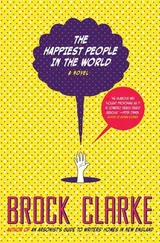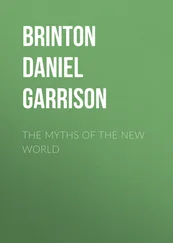In reality, unsurprisingly, erasure of Catholicism from the workers’ credo espoused by Sánchez Gordillo since 1979 did not have the effect of erasing all of that faith which existed before. And so, in spite of his statement that ‘we’ are not religious, and the fact that the semana cultural has ostensibly replaced semana santa , both worship in general and that vital part of the Spanish Catholic year, Holy Week, continue in Marinaleda.
The Catholic Easter traditions persist in the streets of the pueblo , starting with the Palm Sunday procession in which children walk dressed as apostles, accompanied by one niño dressed as Jesus Christ on his donkey. It proceeds on Good Friday with the parading of the Christ statue from the seventeenth-century Iglesia Parroquial de Nuestra Señora de la Esperanza, tucked away from the main road in the north-western corner of the village, and then the Virgen de la Esperanza, the Virgin of Hope, the village’s patron saint. There is also weekly worship with a non-resident priest, Manuel Martínez Valdivieso, who presides in El Rubio. He and Sánchez Gordillo avoid each other, and Valdivieso has been known to say, bitterly, that he is the priest for all of the village, whereas Sánchez Gordillo is only mayor of the half who elected him.
There are half-truths to Sánchez Gordillo’s claim that utopia is secular. Marinaleda is certainly much less observant than many neighbouring pueblos , and it is, crucially, situated in a long history of often violent enmity between the Church and the workers. The Church has traditionally been a proxy for the State, both before and, in a sense, even after Franco’s dictatorship. Until recently, a portion of all Spaniards’ income tax went towards paying for the upkeep of the Catholic Church and the salaries of the clergy; only in 1988 did the PSOE bring in the possibility to opt out by ticking a box on your income tax form.
But the peripatetic priest, Valdivieso, is right too. The regular churchgoers complain, studiously off the record, that they are marginalised by the village’s official culture. No one will despise them for going to Mass, much less prevent them from doing so, but it’s telling that the Ayuntamiento and the Marinaleda TV station ignore all religious events in the village.
‘Holy Week does exist’ in Marinaleda, protests the peculiar, ancient-looking website of the parish church, in a declaration surrounded by kitsch religious clip-art, ‘and there is a small Brotherhood whose office-holders are highly revered in the village.’ The legacy of a time when reverence was more commonplace – indeed, under Franco, at the very heart of state-sanctioned culture – is still visible behind closed doors. Throughout my host Antonio’s house, the walls and shelves are crowded with Catholic icons and trinkets, more on the refined than the kitsch side; paintings, figurines, framed passages from the Bible.
When I first arrived, I assumed – wrongly – that their presence must mean Antonio was an anti-Gordillista, as if you had to make a choice: you were either conventionally religious or a worshipper of the new messiah. Chatting one evening after dinner, I discovered he was neither. ‘The heavy metal concerts they have for semana cultural are very popular here,’ he told me from his rocking chair, before getting up to stoke the coals in the fire. I used the opportunity to ask about the icons on the walls. ‘No, no, all of these religious things were my mother’s, and I just left them up.’ Most marinaleños have become communists instead of Catholics, he added – it’s a direct replacement, a new faith.
Are you a believer in the new religion then? I asked. ‘No!’ he said, happily. ‘I don’t like politics either. I believe in nothing – I’m a nihilist, an existentialist. I just want to live, I don’t need a philosophy. I have my friends here, and everywhere I go people say hello to me. There’s no crime. The police and the priests are superfluous – and so are the politicians.’ In this wonderfully charming, slightly camp septuagenarian, it struck me, was the innate Andalusian anarchism I’d read about. Individual freedom and autonomy above all else – and a pox on authority figures of all kinds.
‘ Carnaval is my favourite holiday of the whole year,’ Cristina had told me with genuine excitement a few months beforehand, ‘better than Christmas, better than semana cultural , better than the feria .’ It’s the traditional Catholic pre-Lenten festival, a last gasp of indulgence before forty days of self-sacrifice; in Marinaleda, they persist with the festivity, but without the religious penitence that follows. In the run-up to carnival, the only discussion is your disfraz , your costume. Like a ludic version of anarchist ‘affinity groups’ convened for direct action, in groups of up to fifteen close friends, they choose a collective theme and work on their costumes together.
This was carnival season across the pueblos of the Sierra Sur, and there was an ineffable excitement in the air. There seemed to be a greater than usual number of boy racers roaring down Avenida de la Libertad, playing reggaeton so loud it shakes my bedroom window. On the Saturday before Lent, Estepa, Rubio, Herrera and all the rest of the surrounding villages celebrate, with two exceptions. In midweek, Pedrera has its unique Ash Wednesday carnaval . The following Saturday, after the start of Lent, and thus somewhat missing the point of a pre-Lenten bacchanal, is Marinaleda’s turn. The date was chosen for the simple reason that they want everyone in the region to come, rather than competing with all the other festivities.
When I attended in 2013, the revels began with a parade around the village: everyone was told to congregate at 7 pm on Saturday night, in the Ayuntamiento car park. I arrived early – which is to say, on time – but even with only a quarter of the participants there, it was already quite a scene.
The people who dress up are mostly between the ages of five and thirty-five – liable therefore to get excitably drunk on either rum-and-coke or plain coke, depending. Every group wheels around a trolley stocked to the brim with bottles of booze, mixers and plastic cups. There were swarms of bugs, squirrels and harlequins, about twelve aliens in green body paint and purple wigs, a good showing of clowns, doctors and nurses, a few hens, some slightly dubious geishas and Native Americans, straw men from the Wizard of Oz, a bullfighter or two, and a gaggle of hippies. As the crowd swelled with ever more ridiculous-looking incomers, the older people of the village gathered around the edges of the car park, looking on in their serious brown and grey civvies; parents proudly arranged their little ones for photos. Even before we set off on the hour-long, slow-step circuit around almost every street in the village, there was already a high fever of singing, extravagant toasts to each other and to the village, and giddy high jinks. The human right to joy was exercised with righteous determination: it was a tremendous piss-up.
There were prizes for the best group costume, and some displayed their theme with impressive thoroughness. One group had built a large, mobile, mostly cardboard elephant to embellish their big-game hunting theme. Topically, it featured the Spanish king Juan Carlos I in camouflage greens, who gave an interview in character to Marinaleda TV, surrounded by his fellow hunters, and, awkwardly, a couple of ‘natives’ in grass skirts and blackface. The man dressed as the king looked so uncannily like the real Juan Carlos that I hardly recognised him at first – it was Bigotes from the olive oil factory, but crucially, shockingly, without his talismanic moustache: he had shaved it off for the occasion.
Читать дальше












